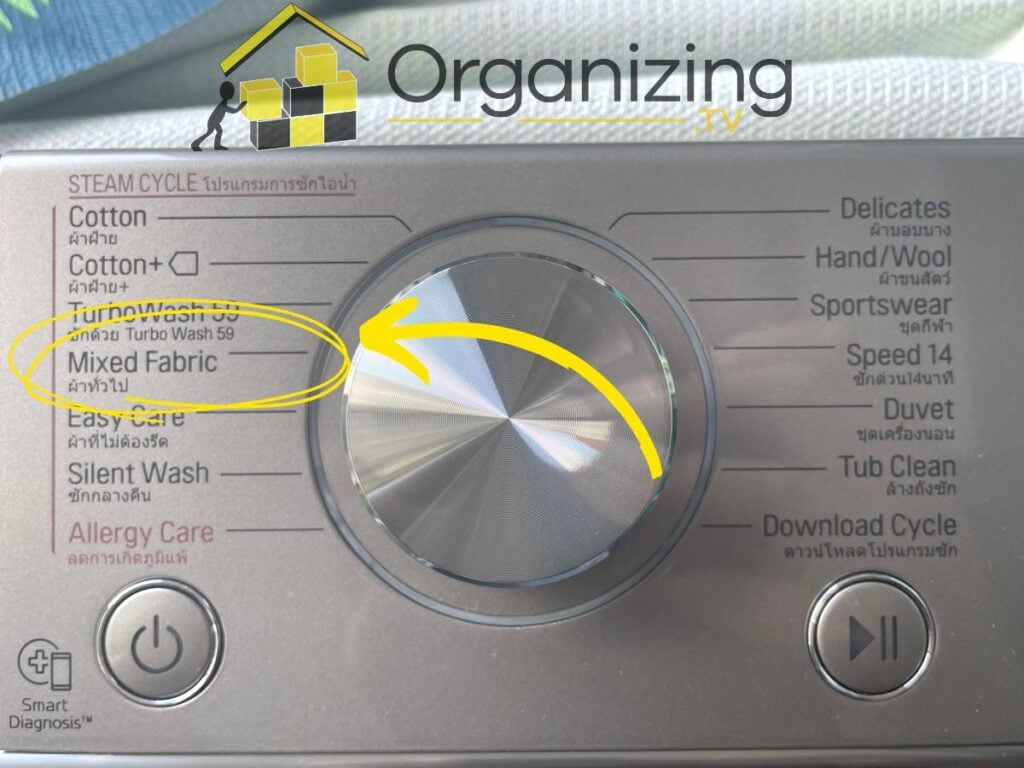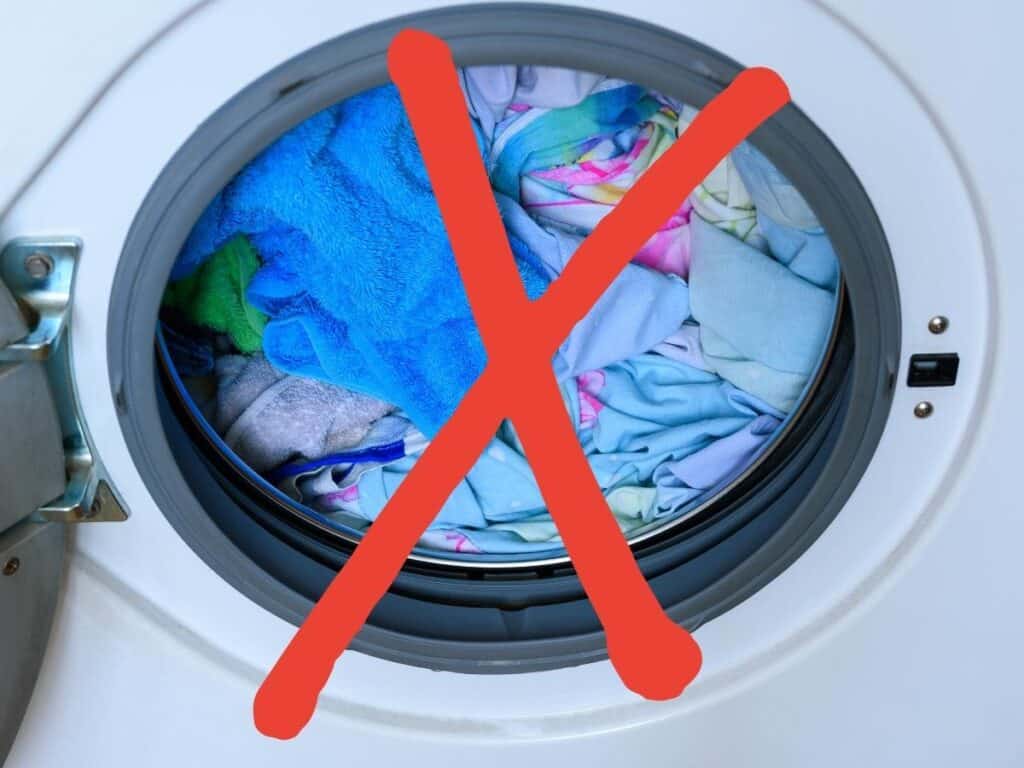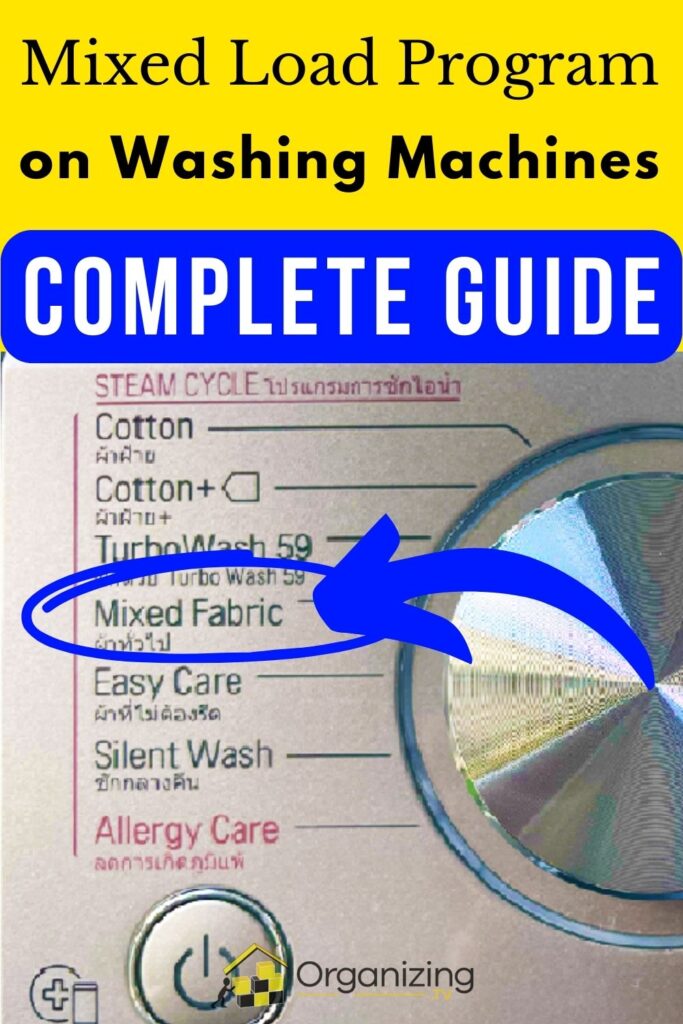Both old and modern washing machines feature multiple settings, and it’s often difficult to know which one to choose. The “Mixed Load” setting is one of the most useful settings on a washer, especially for the average user. Interestingly, despite its usefulness, most people need to be made aware of what this load cycle is and what it does.
The mixed load setting on a washing machine is a wash cycle that cleans multiple fabric types in a single load. It can wash several common durable materials (i.e., cotton, linen, polyester, denim, etc.) together without causing damage. However, you should avoid cleaning delicate garments with this cycle.
In this article, you’ll learn the purpose of using the mixed load setting on your washing machine, the benefits of using the cycle, and a few things to consider before using this mode on your clothing. Read on to learn more.
The Purpose of the Mixed Load Setting
Washing machines featuring the mixed load option can wash multiple different fabric types in a single load of laundry without harming the fabrics.
The cycle uses hot water at temperatures between 86 and 104 degrees Fahrenheit (30 to 40 degrees Celsius) and a high-speed spin cycle. As such, the mixed load setting is best suited for washing medium to heavily soiled garments.
Concerning types of fabrics, this washing machine setting is ideal for use on durable materials, including cotton, linen, denim, and polyester, among others. Avoid using more delicate fabrics (i.e., silk, lingerie, sportswear, curtains, etc.) when using the mixed load option.
Weaker garments can quickly become entangled in the buttons or zippers, leading to damage. For these items, you should opt for the gentler delicate cycle.
Does My Washing Machine Have a Mixed Load Setting?

Every appliance is different, so you’ll have to examine the control panel to determine if your washing machine has mixed load capability. Check for one of the following labels on a dial indicator or button:
- Mixed
- Mixed Load
- Mixed Fabric
- Mix / Synthetics
Don’t make the common mistake of assuming the “Easy Care” setting is the same as the mixed load option — it’s not. Easy care is designed for synthetic fabrics that don’t require ironing once they’ve finished their dryer cycle.
Unlike the mixed load mode, easy care uses warm water, a medium washing speed, and a low-speed spin, so it’s best for light to medium soiling. It can’t handle heavier fabrics, only synthetics, such as polyester, acrylic, or blended synthetics.
Benefits of Using Mixed Load Setting
There are numerous benefits to selecting the mixed load setting, including convenience, money saving, and less time spent adjusting appliance settings.
Let’s look at these benefits in more detail:
- Convenience – Opting for the mixed load setting on your washer means no longer sorting those easy-to-care-for garments. You can mix linen, cotton, denim, and polyester in a single hamper and toss them in the washing machine to be washed together. This saves time, as it cleans a good portion of your clothing at once and prevents you from having to pre-sort the fabrics.
- Reduces Your Environmental Impact – Washing different fabrics in one load means using fewer washing cycles. As a result, you’re using less water and electricity, which saves money on your monthly energy and water bills. In addition, you’re reducing your negative impact on the environment by conserving water.
- Make Fewer Settings Adjustments – Since you can wash all durable fabrics within a single setting, you’ll no longer have to switch out your washing machine’s settings after every load. You can set the washer to mixed load (and even program it in as a favorite if your appliance has that capability) and leave it there for subsequent uses since it’ll likely be a frequently used setting.
Things To Consider When Opting for Mixed Load
The mixed load feature on a washing machine is practical, convenient, and economical. However, there are still a few considerations to keep in mind to avoid damaging your clothes or appliance.
Avoid Mixing Dark and Light Fabrics
The article mentioned not having to pre-sort fabrics — and you don’t as long as you keep a hamper for durable darks and lights. This eliminates the need to go through your laundry before putting in a load to wash.
You shouldn’t mix darks and lights (even with the mixed load setting) because the darker colors can bleed onto the lighter fabrics and ruin your clothes. This is especially true if you use hot or warm water.
Don’t Overload Your Washer

Knowing you can wash more than one type of clothing in a single go may get you a little overexcited. You may try to load your machine with all of your jeans, leggings, and sweaters in a single load just to get the laundry done as quickly as possible.
However, it’s still important to maintain a normal load volume to avoid overloading the washer. You don’t want to throw off the drum or cause damage to the machine!
Consider Each Fabric Individually
The mixed load setting is great for throwing in a pile of clothes and forgetting about it, but it also gives you less control over how you wash your items. This is why it’s important to get to know your fabrics.
Not all 100% cotton t-shirts are equal. Both may be made of cotton, but one may have a higher density. A thinner cotton shirt may be more susceptible to damage when combined in a washer with heavier garments.
Use your best judgment when washing items of clothing together. Over time, you’ll develop a better idea of which items you can safely use on the mixed load cycle and which garments are best washed separately.
Prepare for Wrinkles
With your first load, expect the unexpected, especially wrinkles. Washing your favorite lightweight cotton blouse with your heaviest denim jeans is likely to lead to wrinkling as they tumble around in the dryer together.
Fortunately, you can pay attention to how things progress during the first wash cycle. If anything happens that you don’t like, chalk it up as a learning experience. Dry the items separately during the next wash, or avoid washing them together at all.
Conclusion
The mixed load setting on a washing machine is an excellent way to get your laundry done in a short period of time. However, you must ensure that your varied load consists of durable fabric types. With this setting and the right forethought, you don’t have to worry about damaging your favorite garments.
From here on out, you can wash your most durable fabrics together while saving time, water, energy, and money.
If you want to learn more about your washing machine’s settings, check out this article.


I’m an expert wardrobe organizer and a bit of a clean freak. I created this website and its YouTube channel to share practical guides about laundry and organizing. My teachings have been featured in multiple large news publications, and I’ve self-published two wardrobe organizing books and an entire course on the subject.
